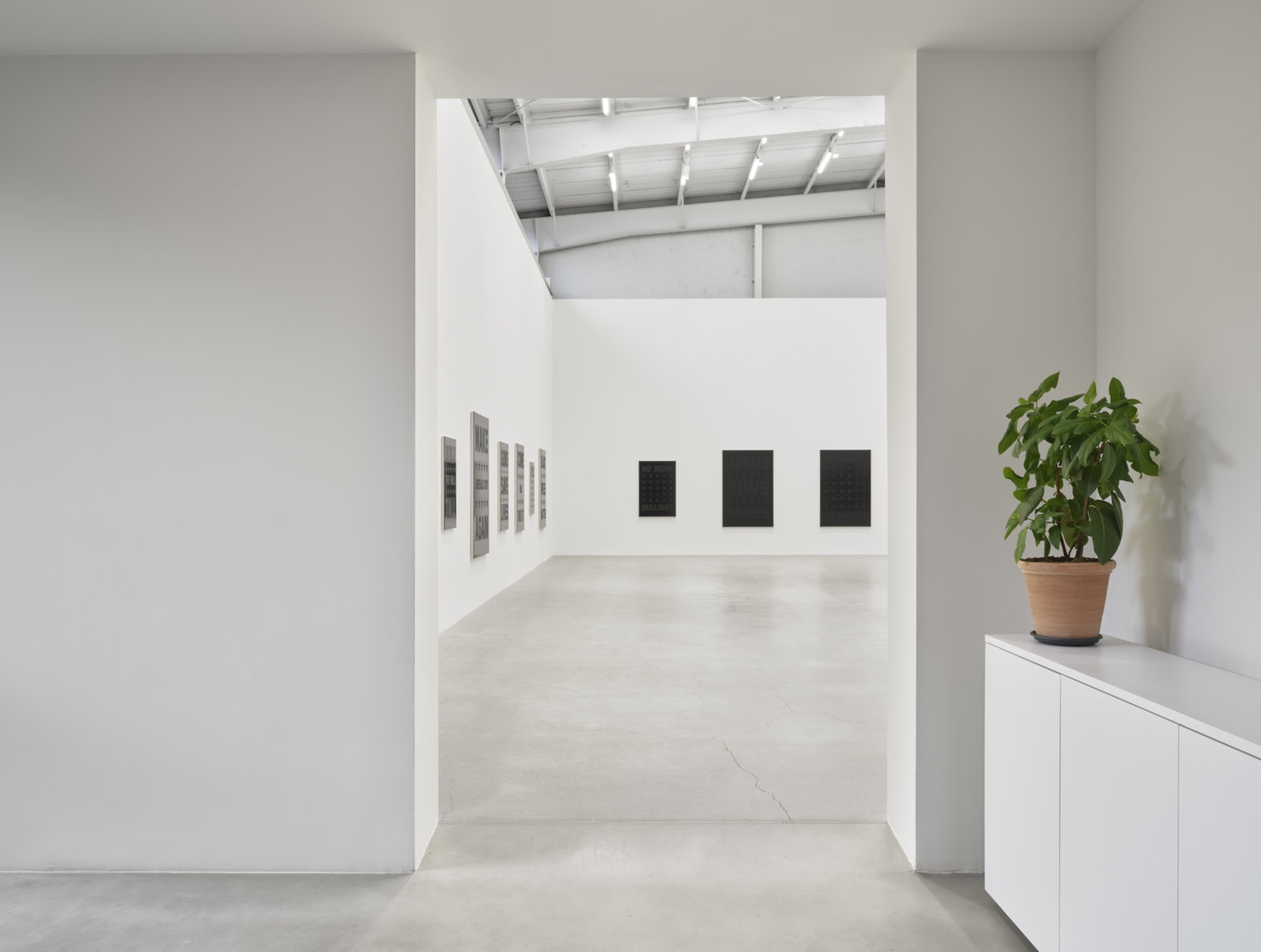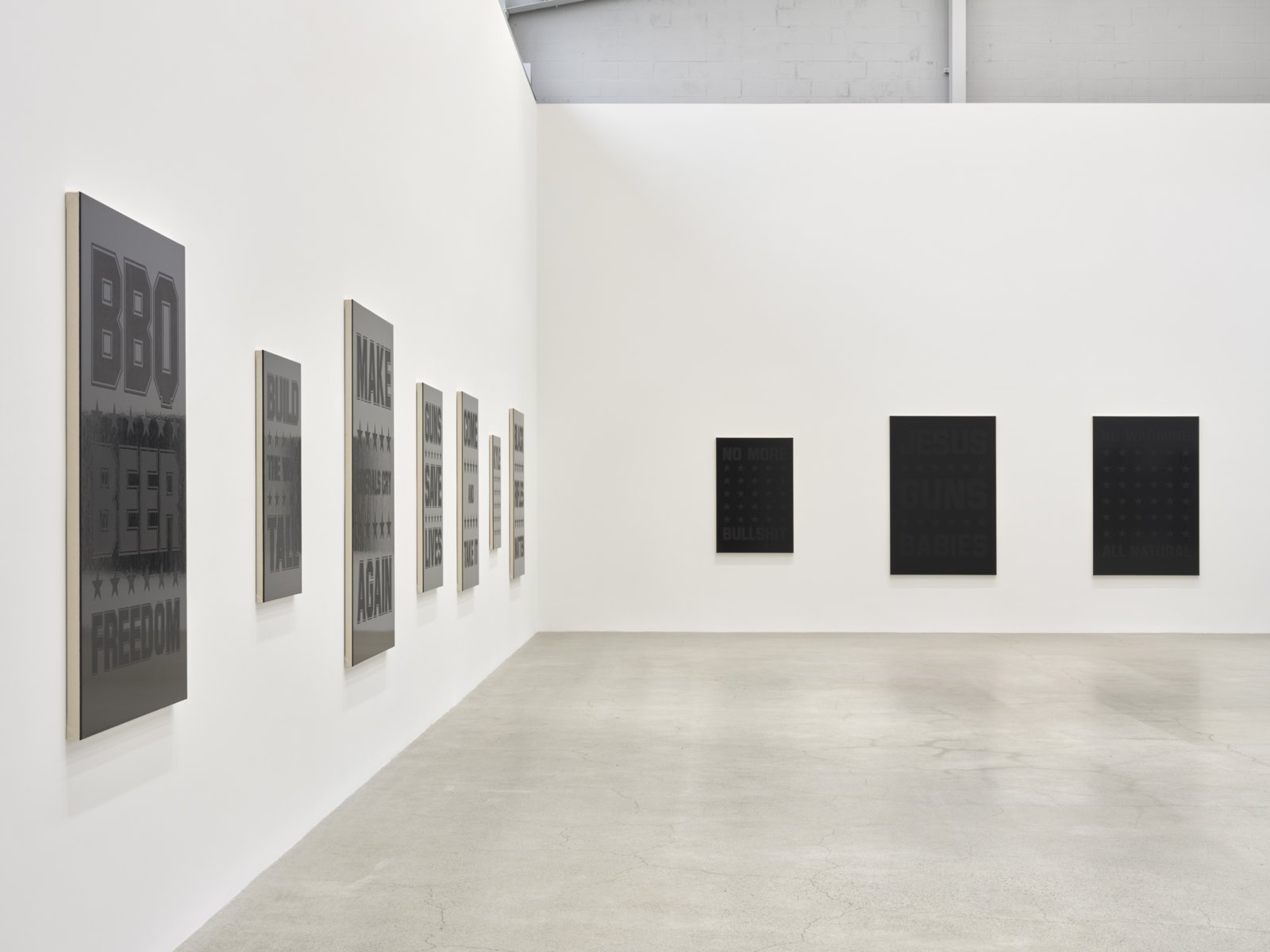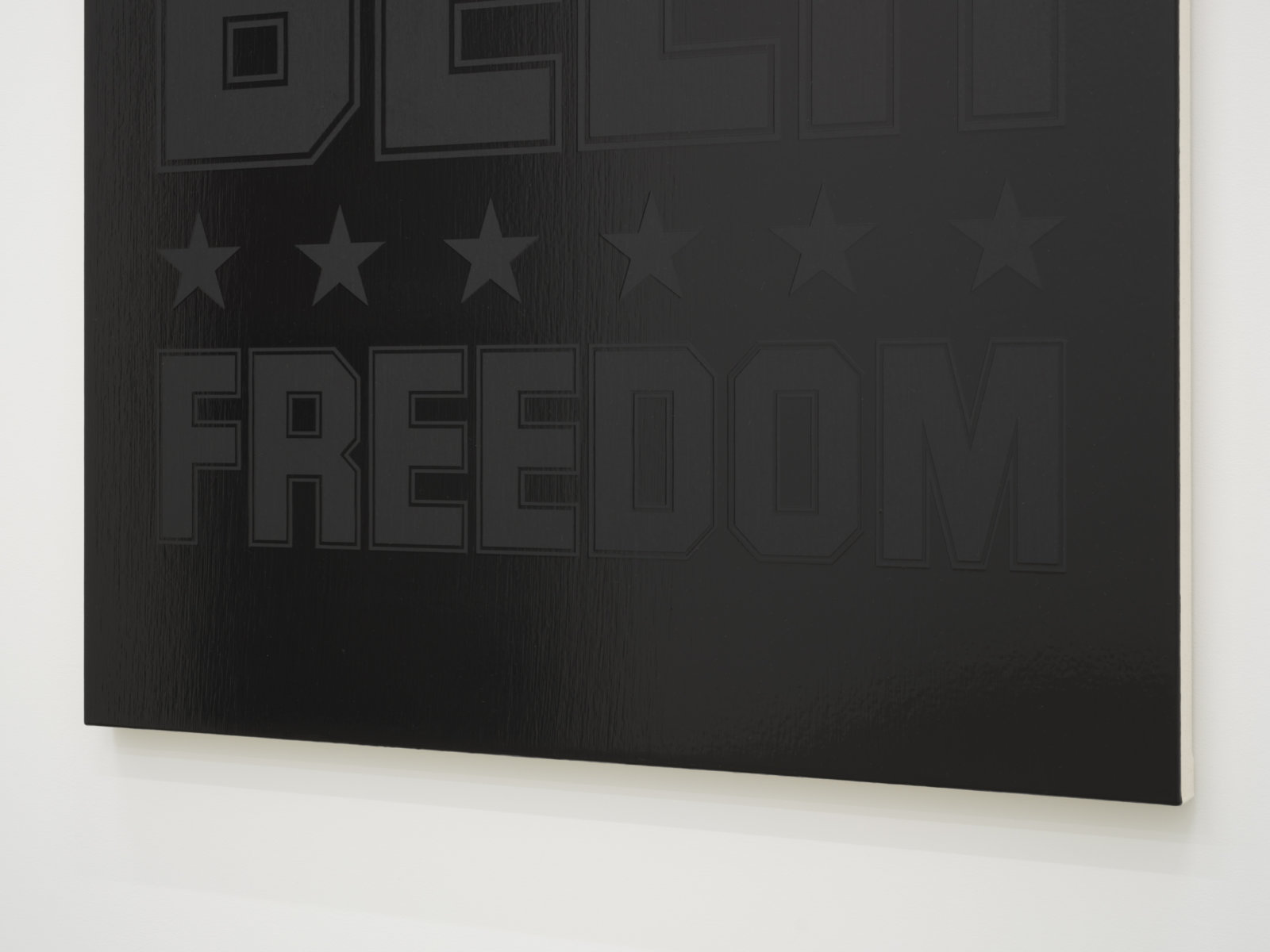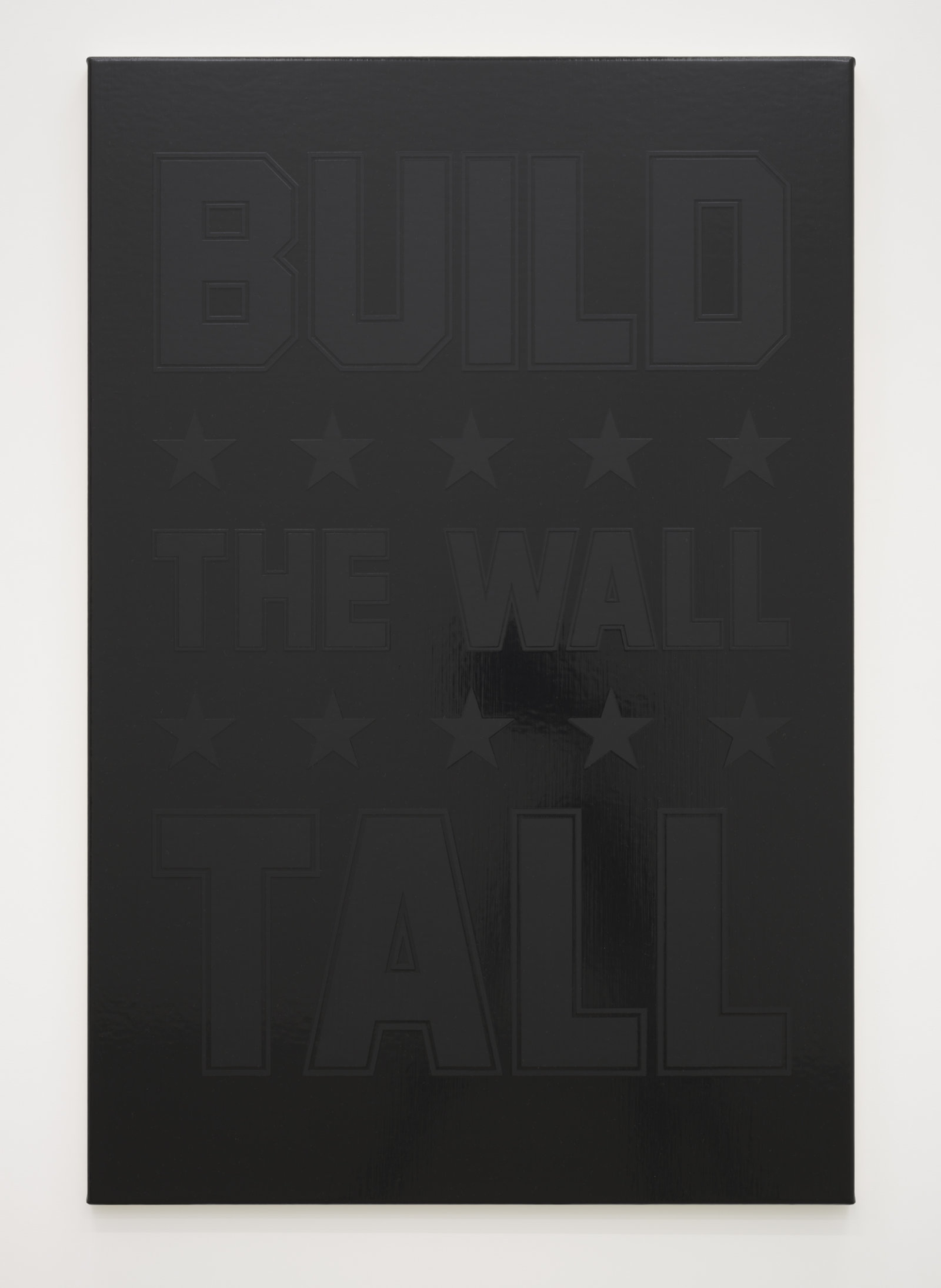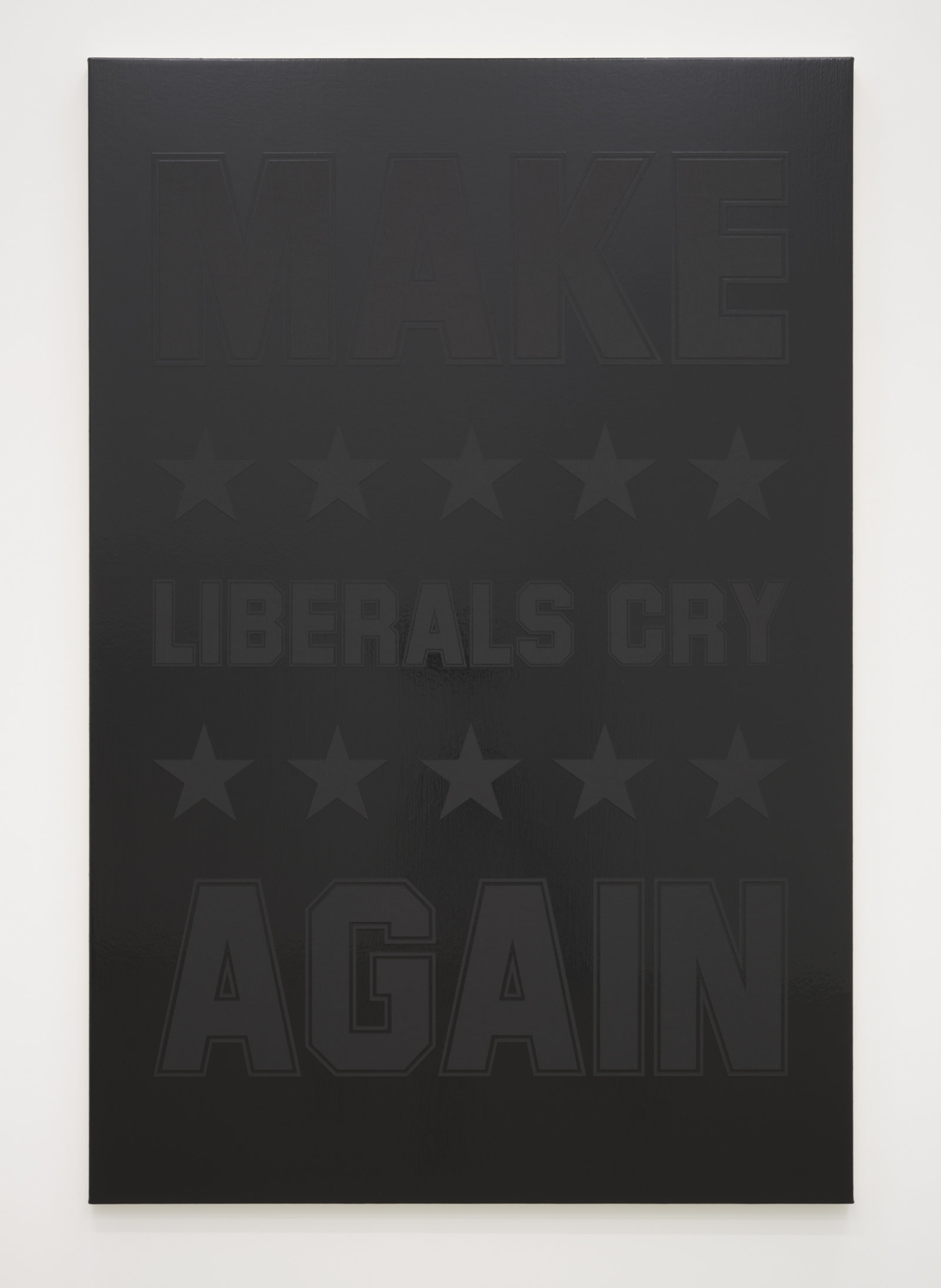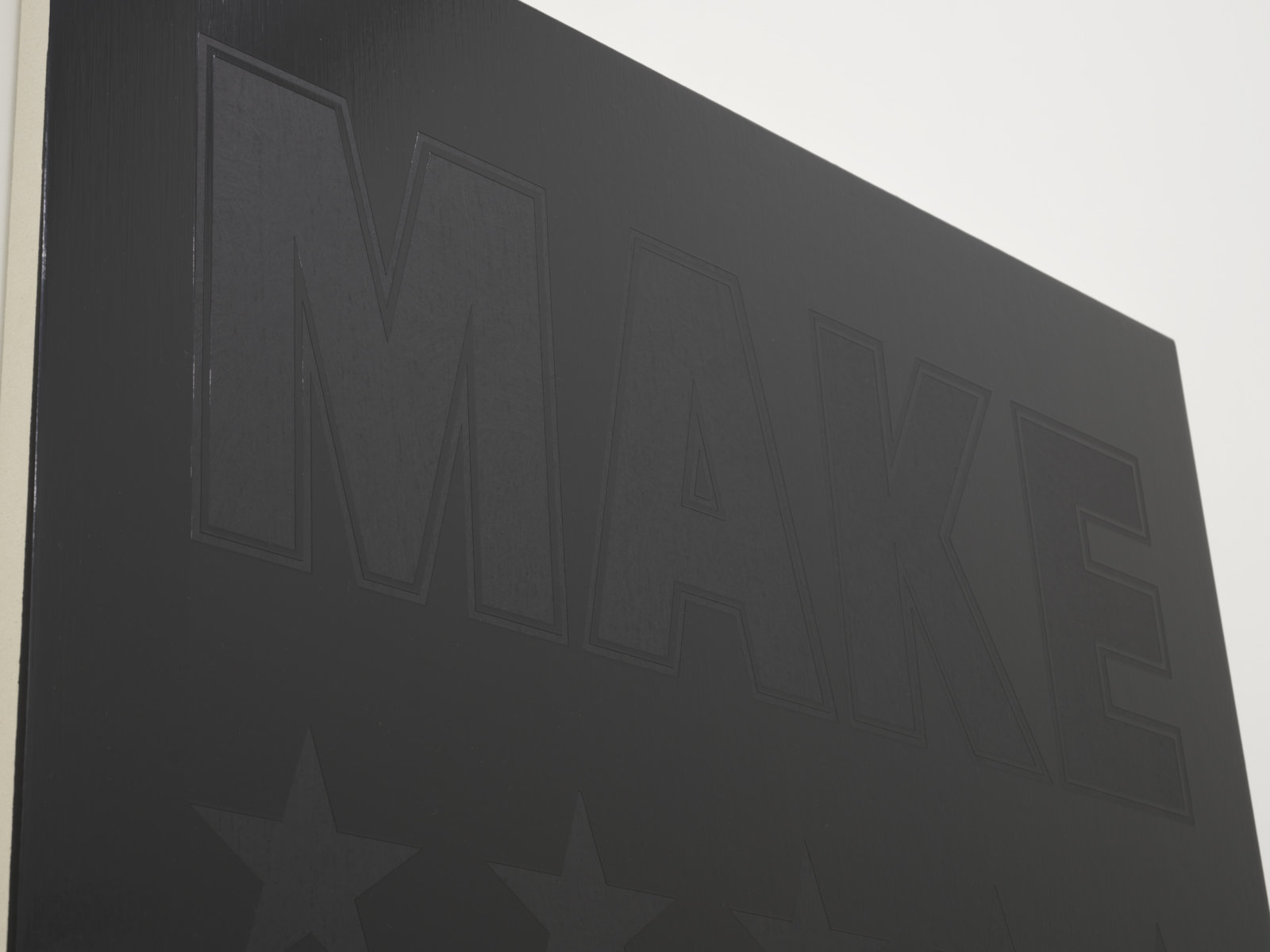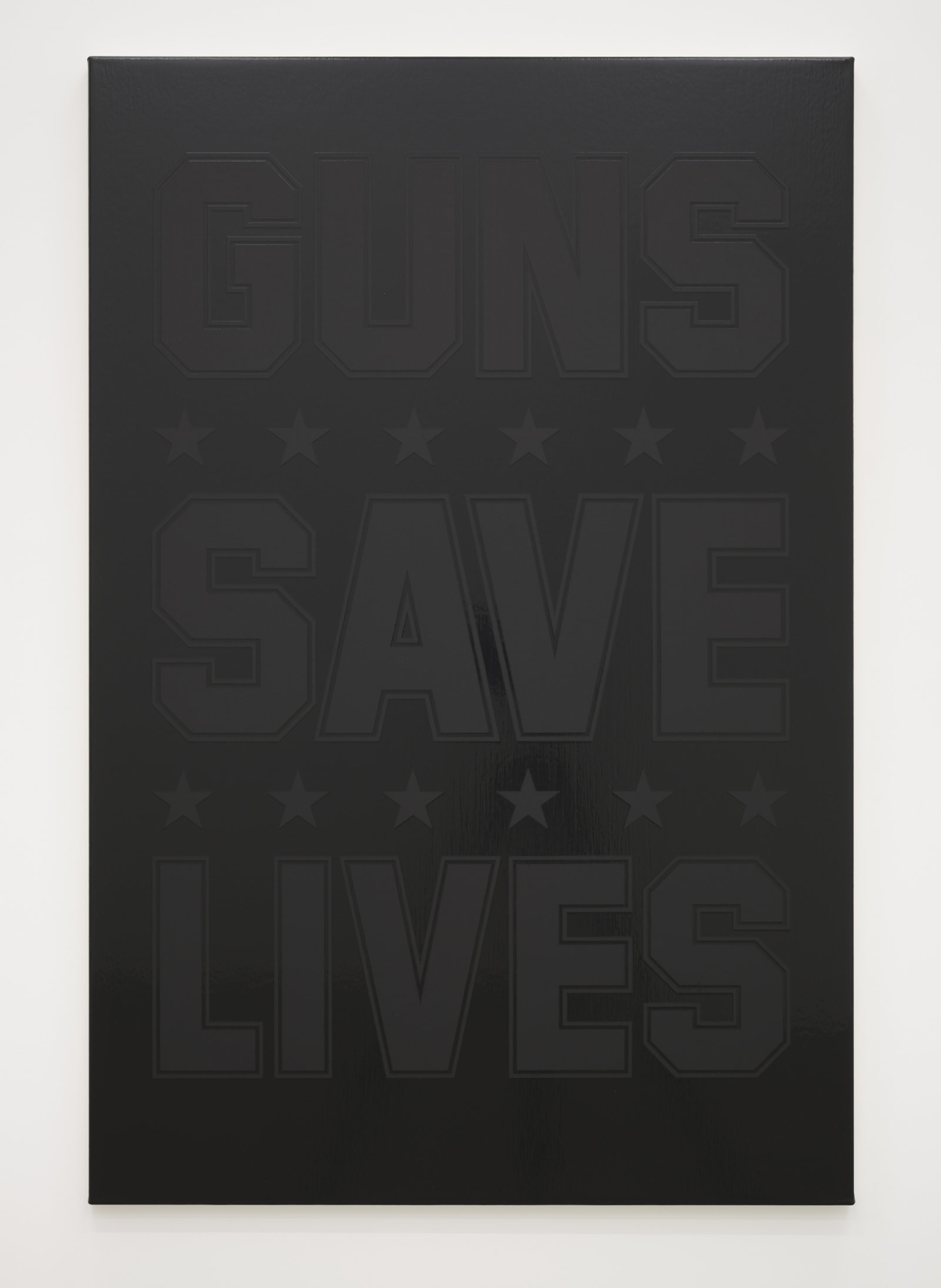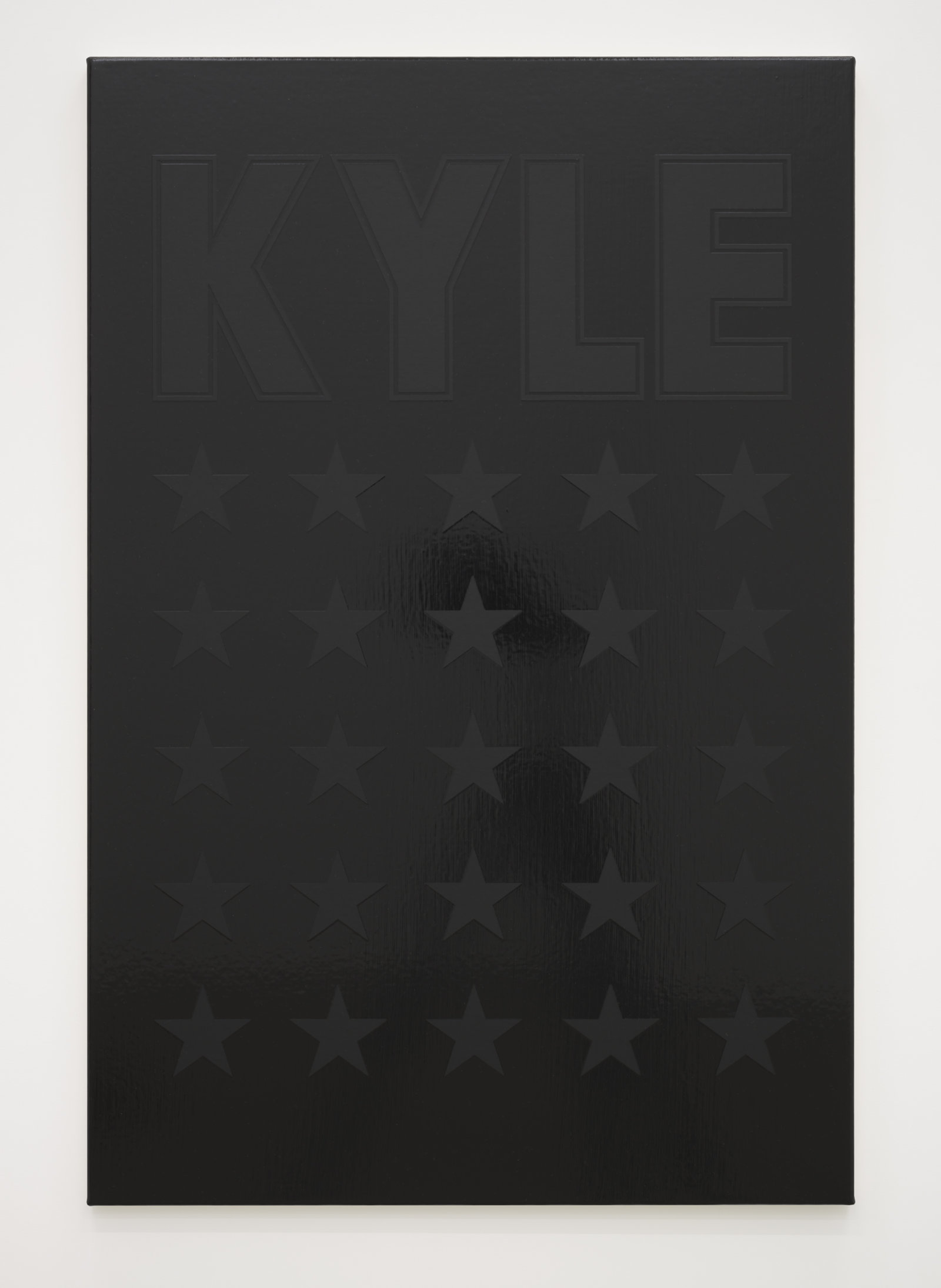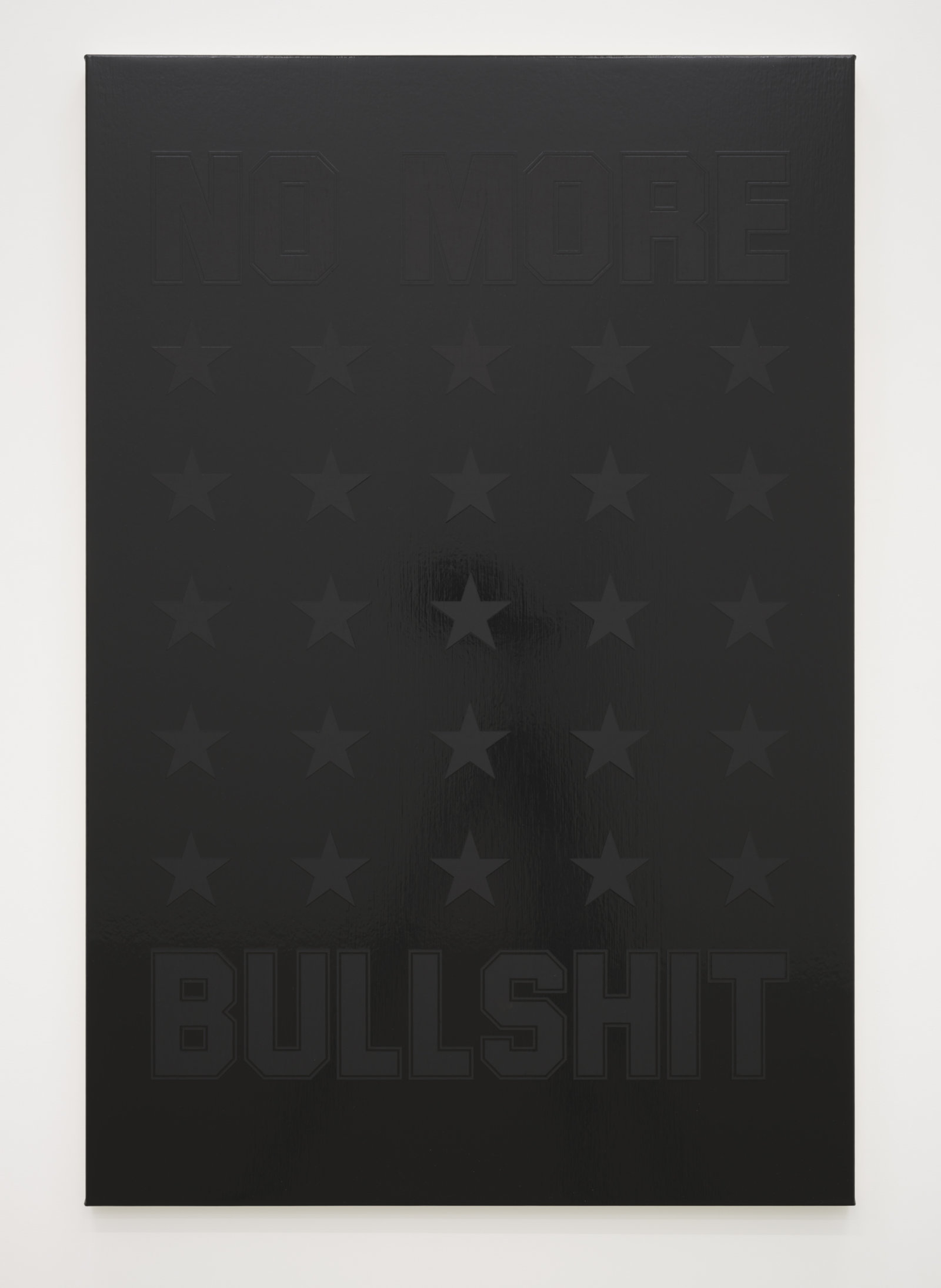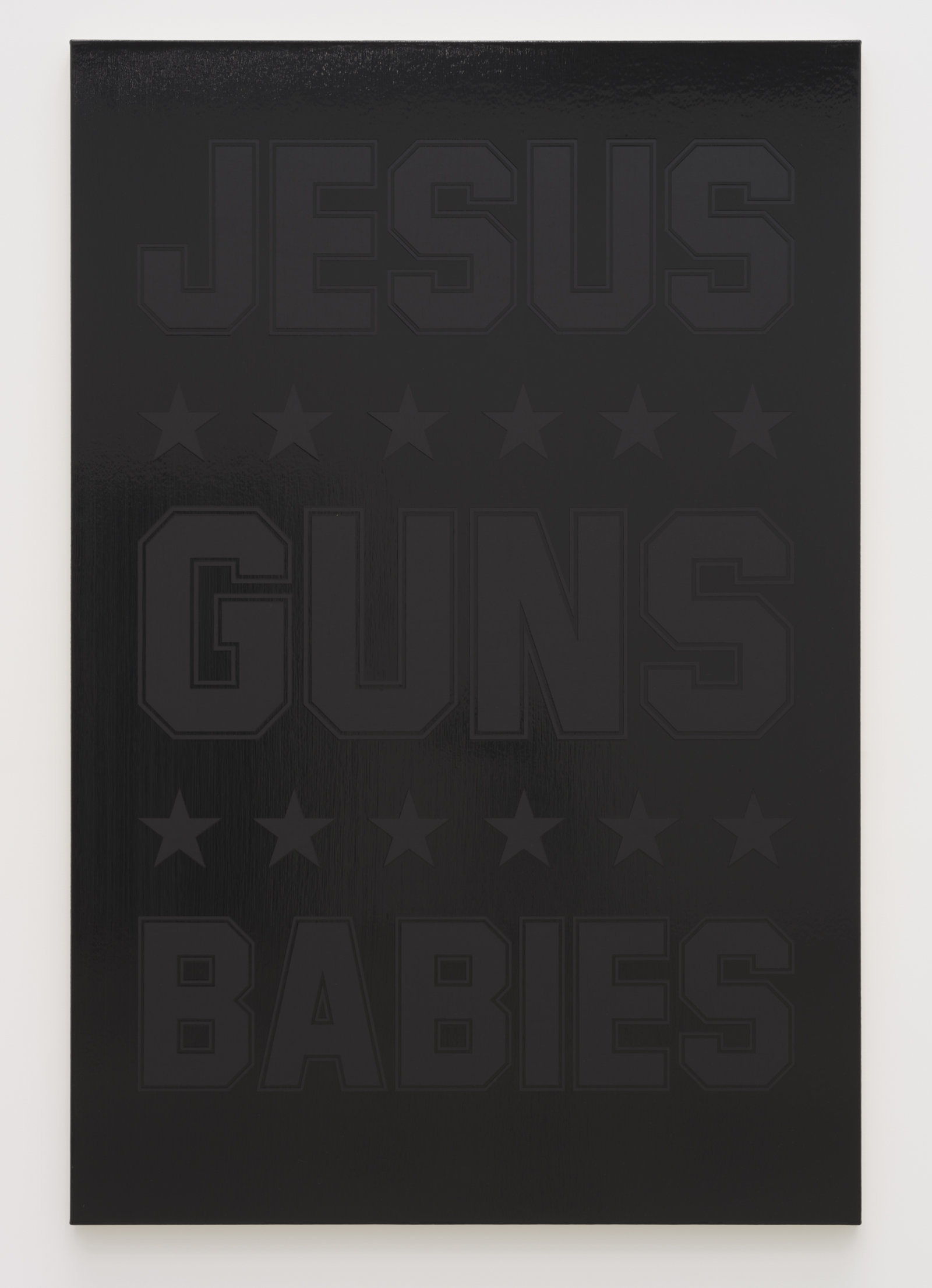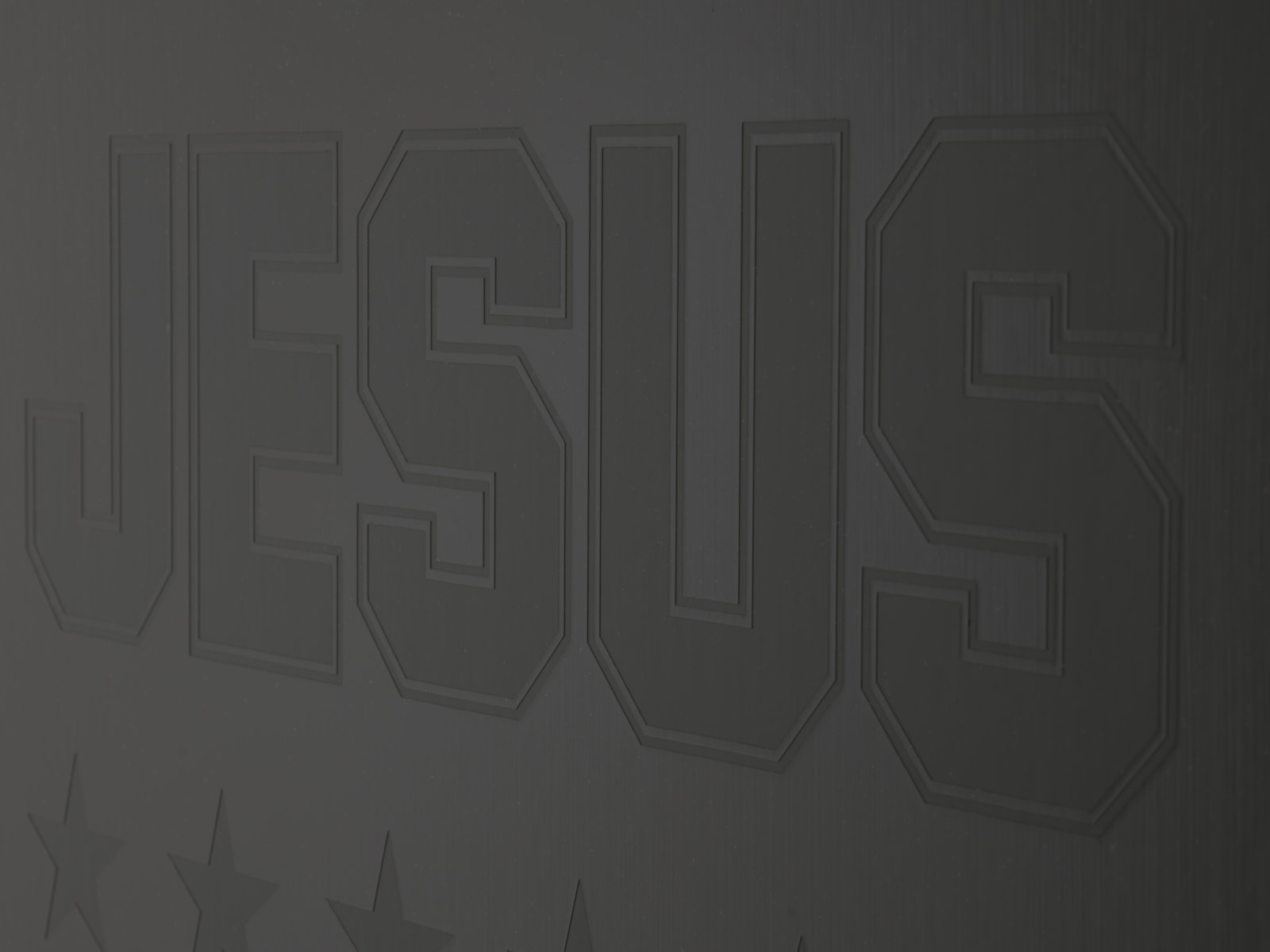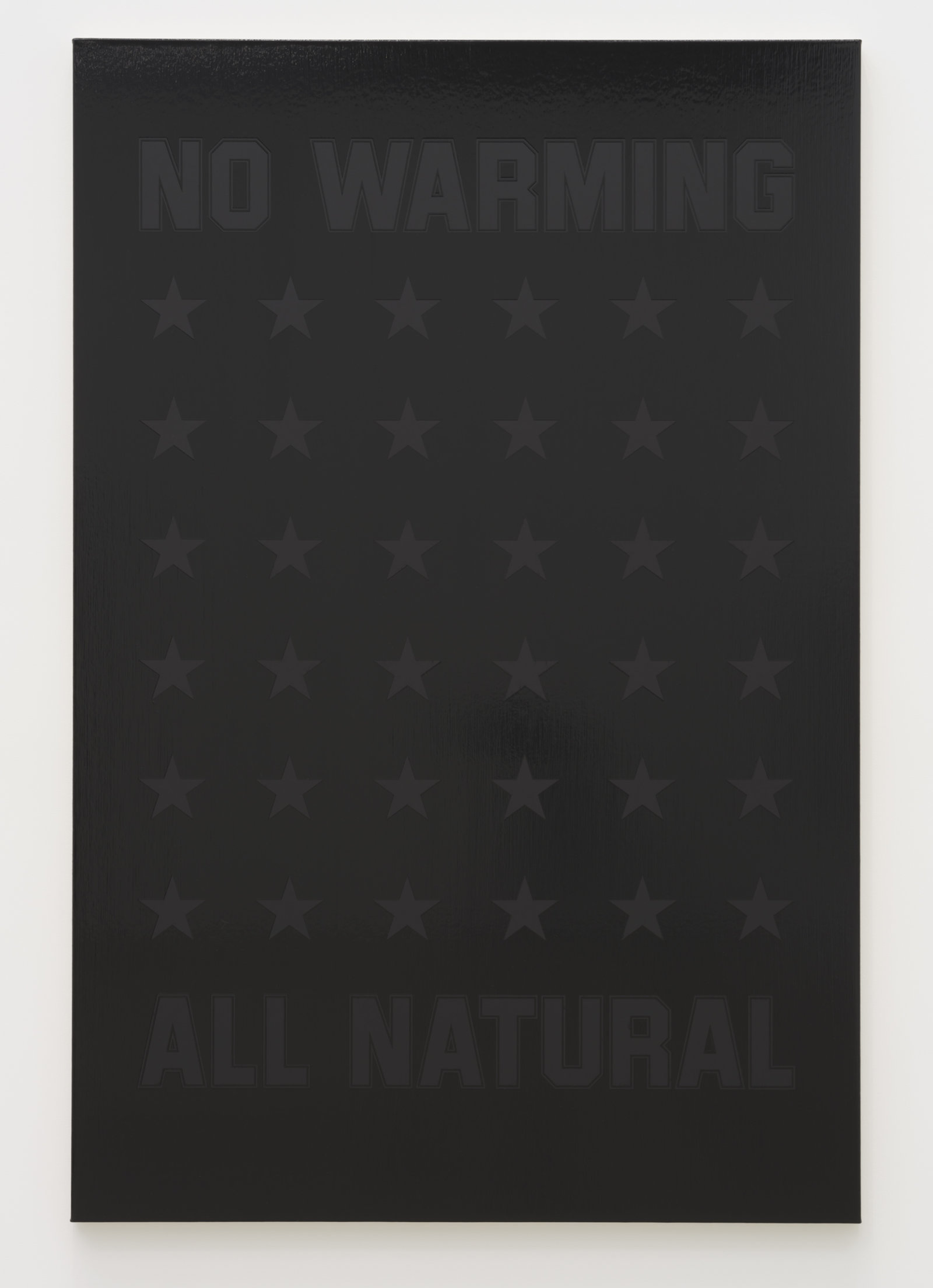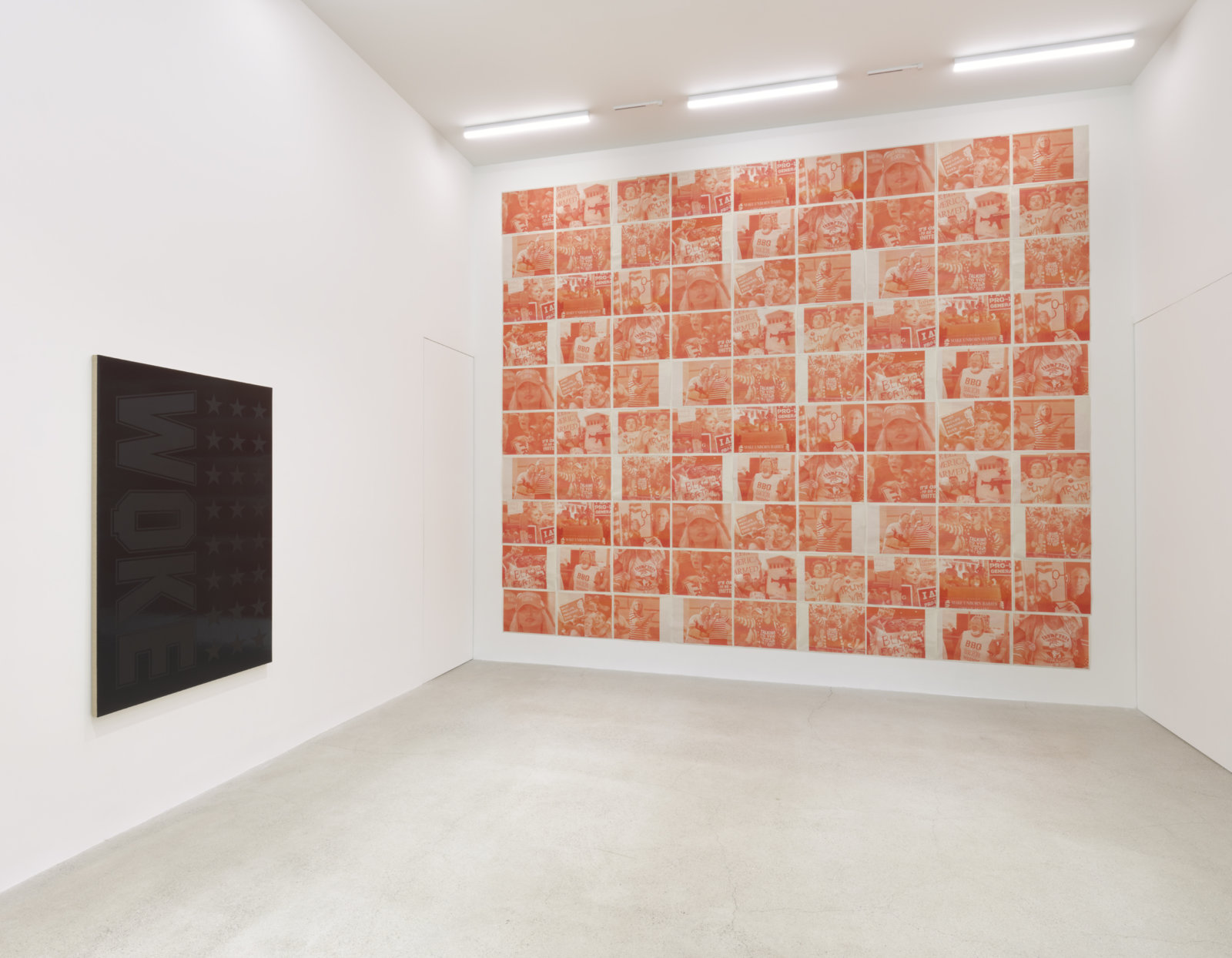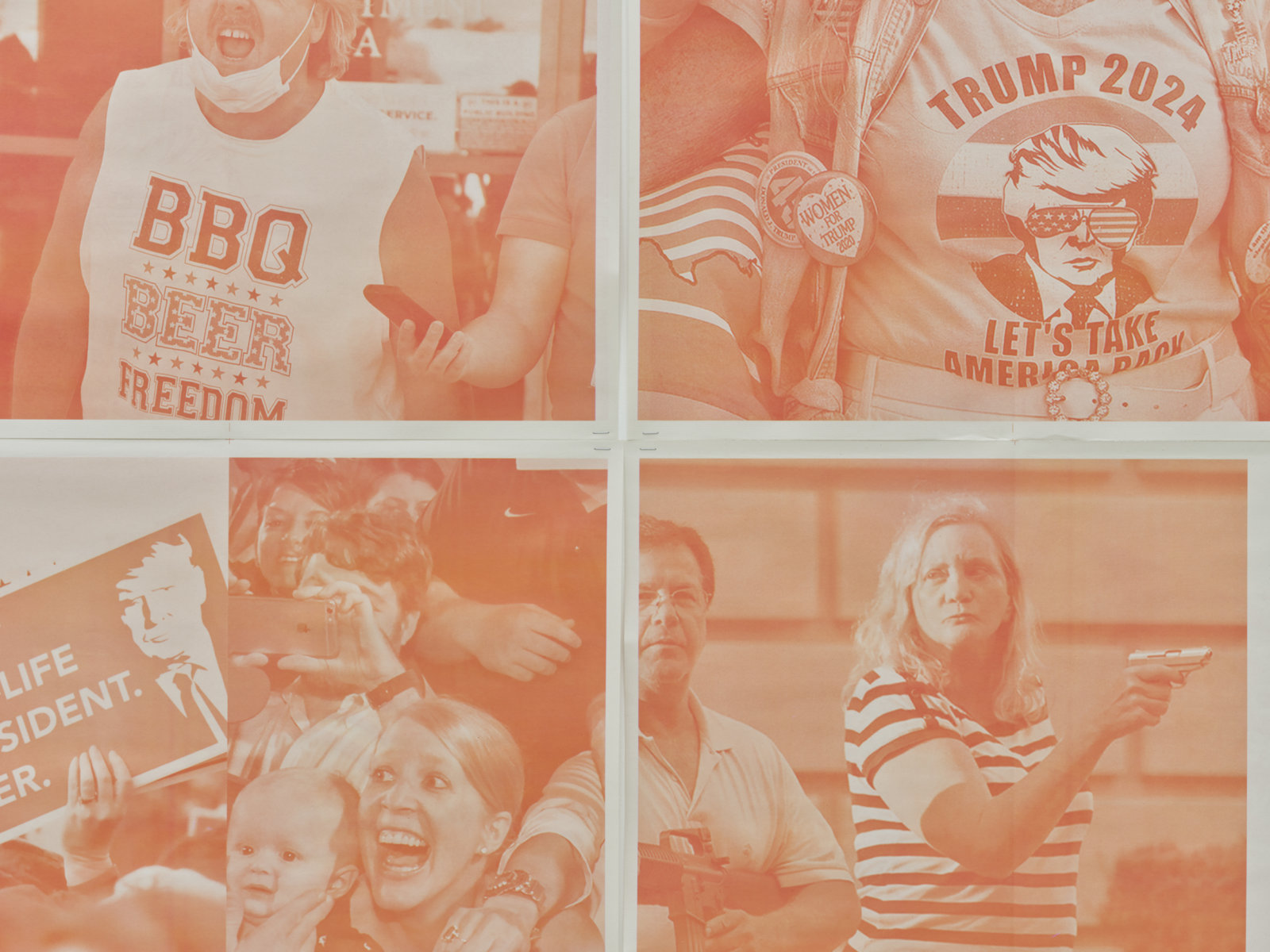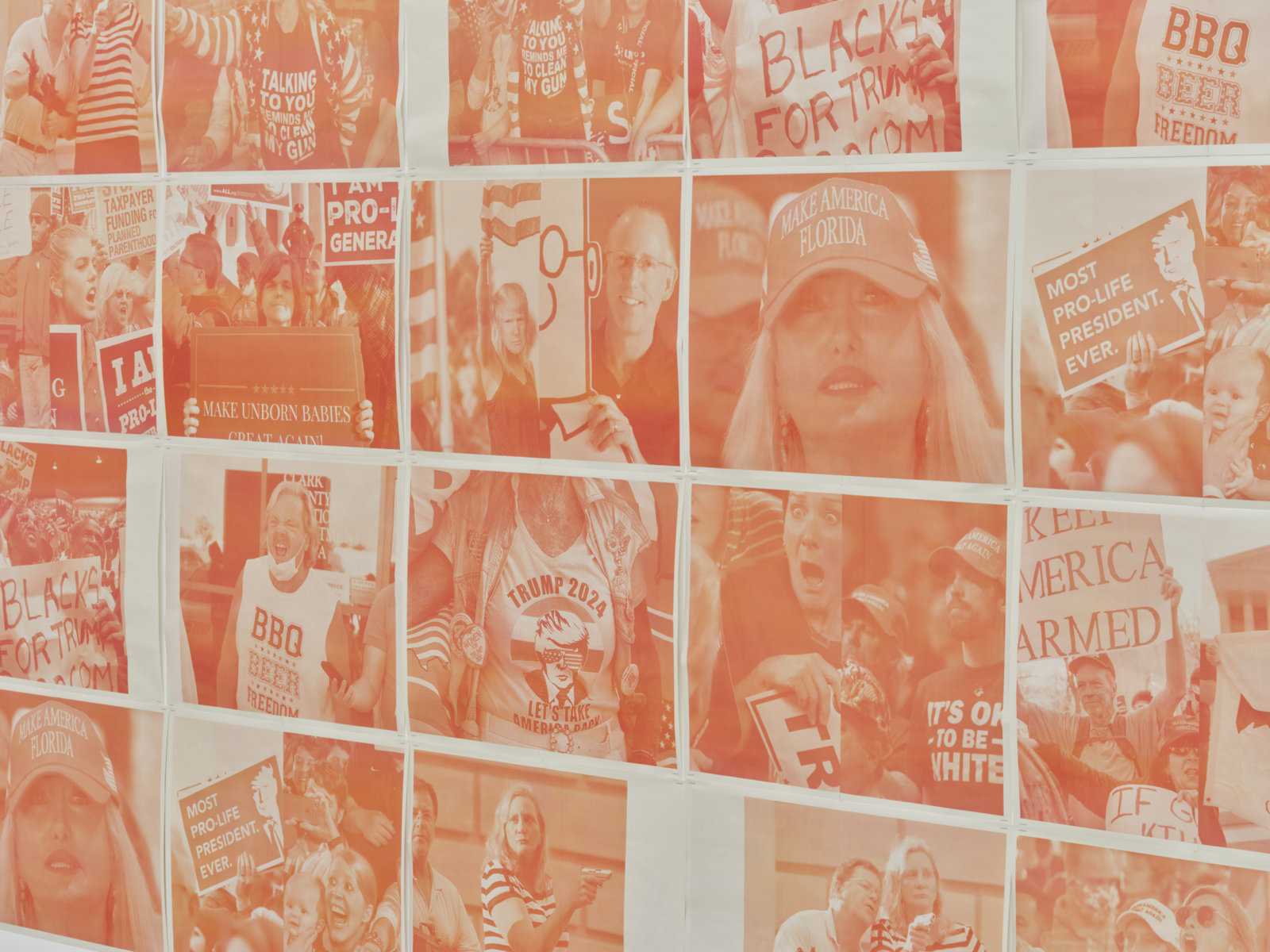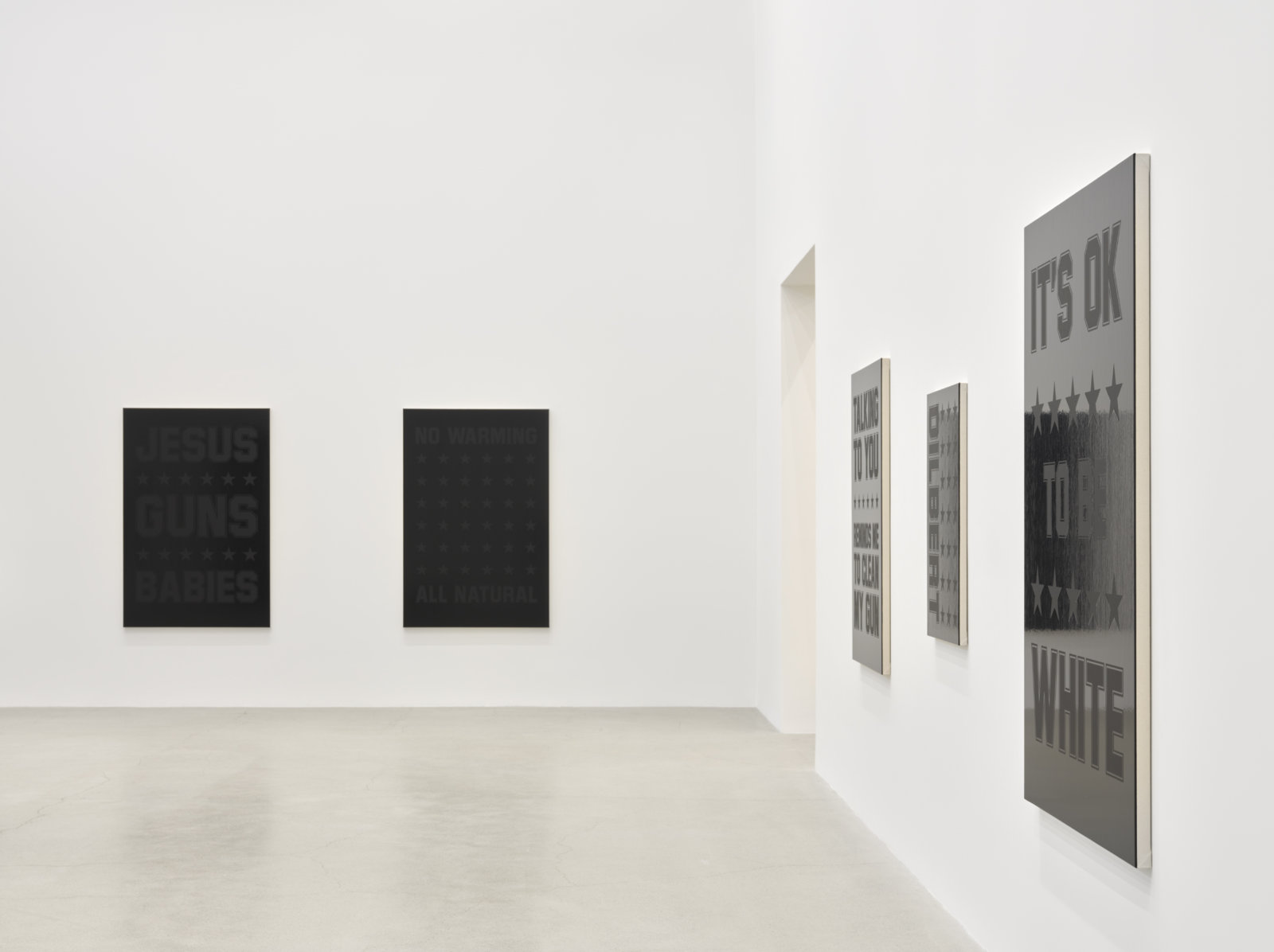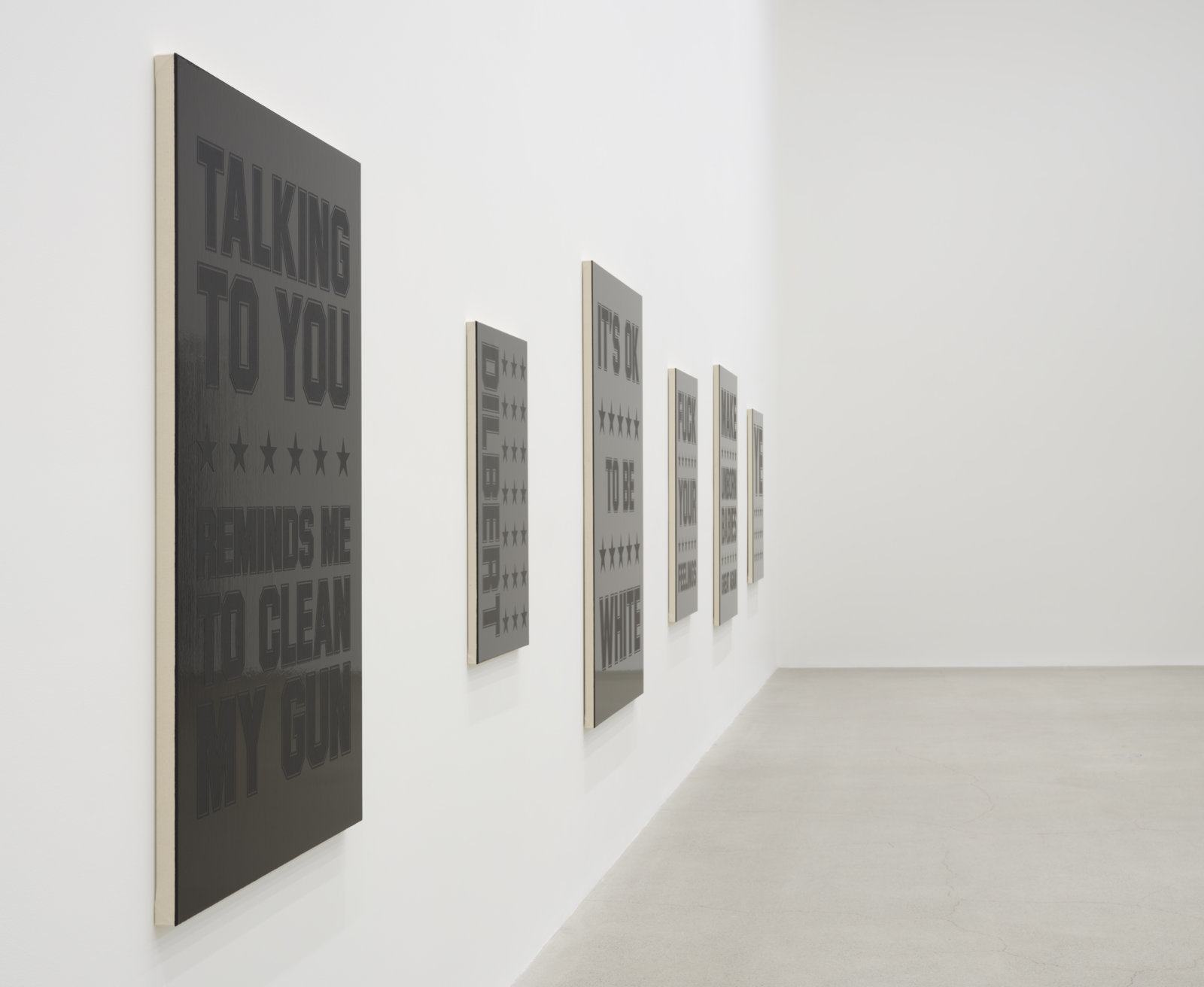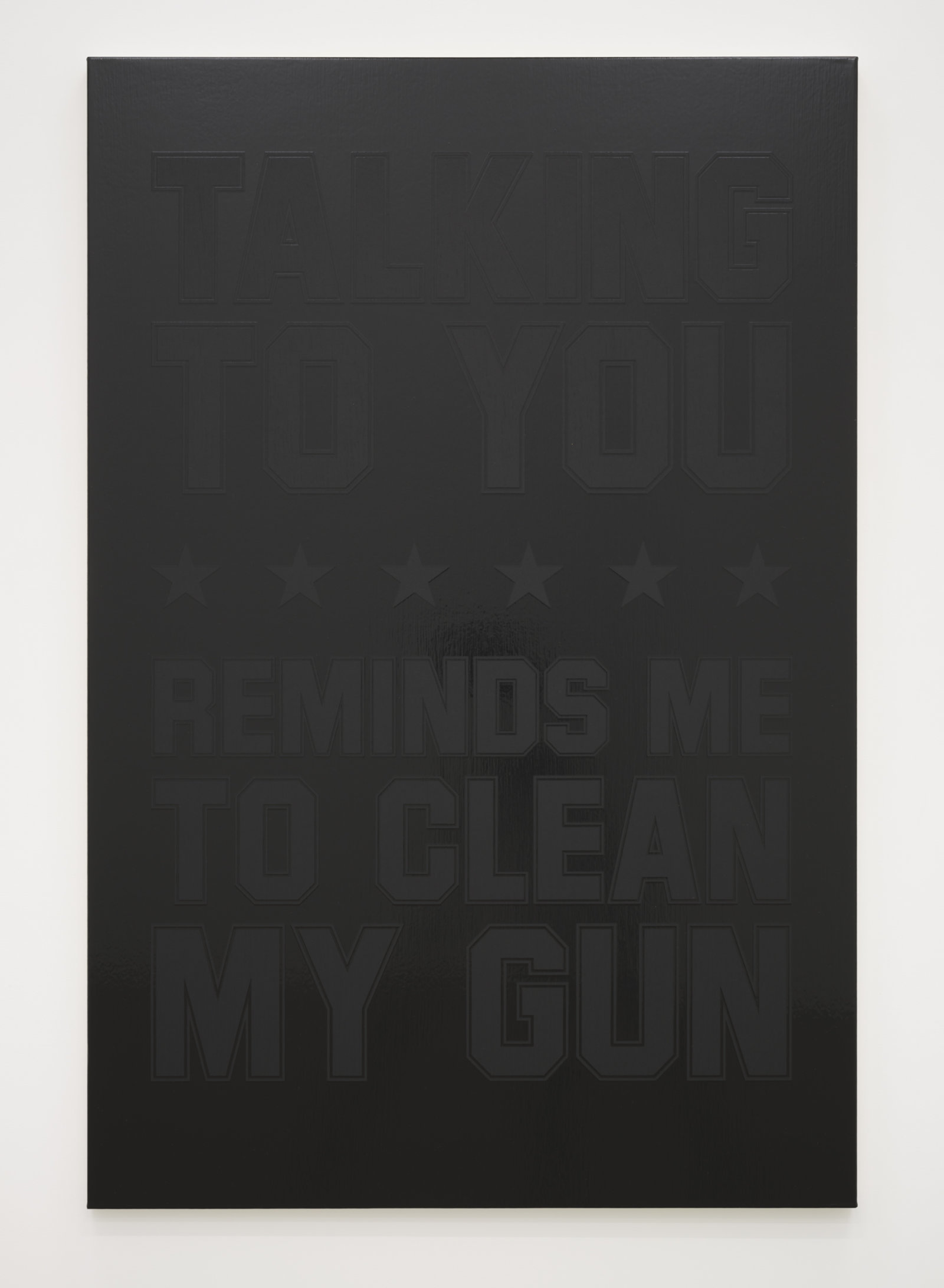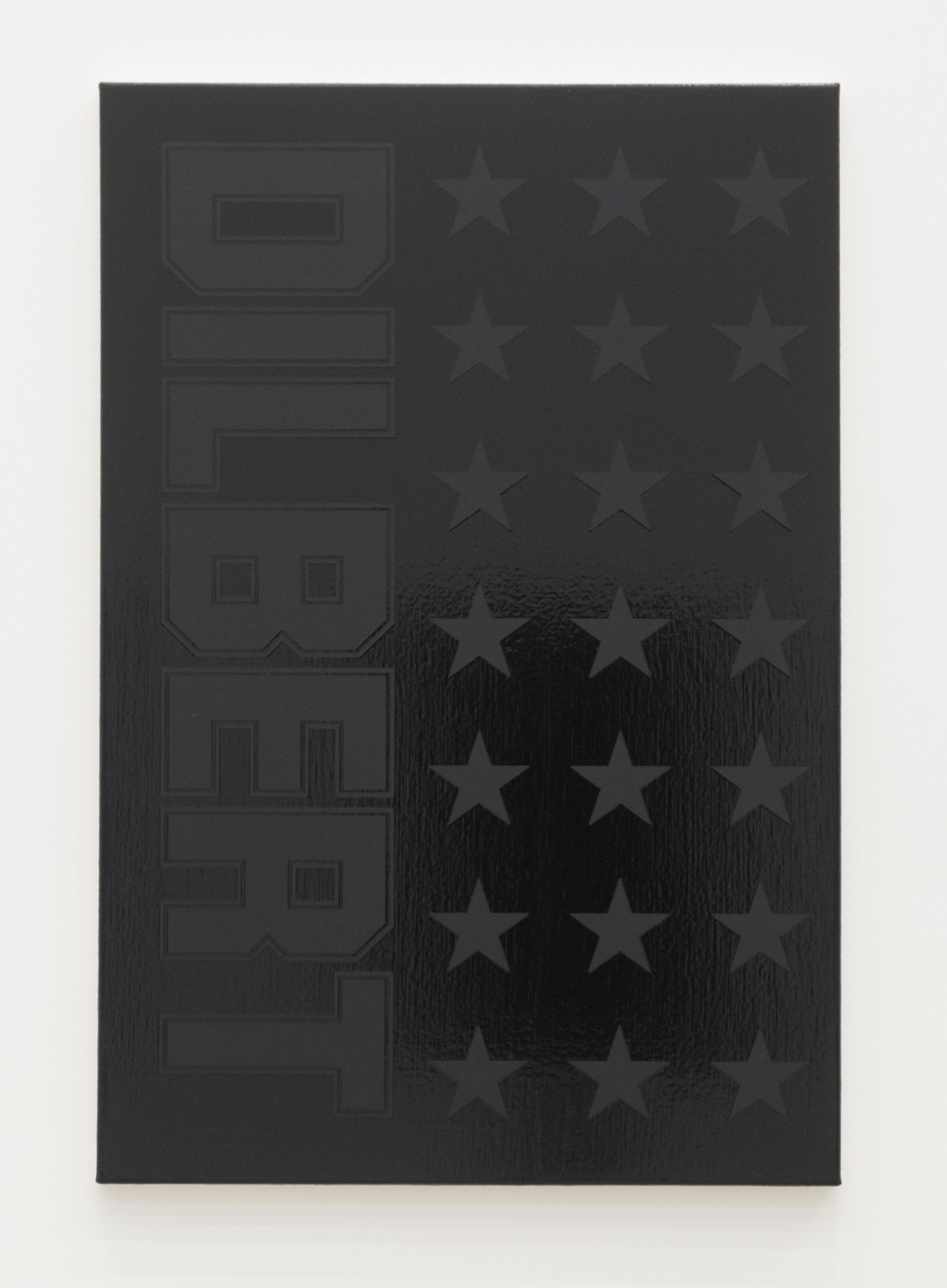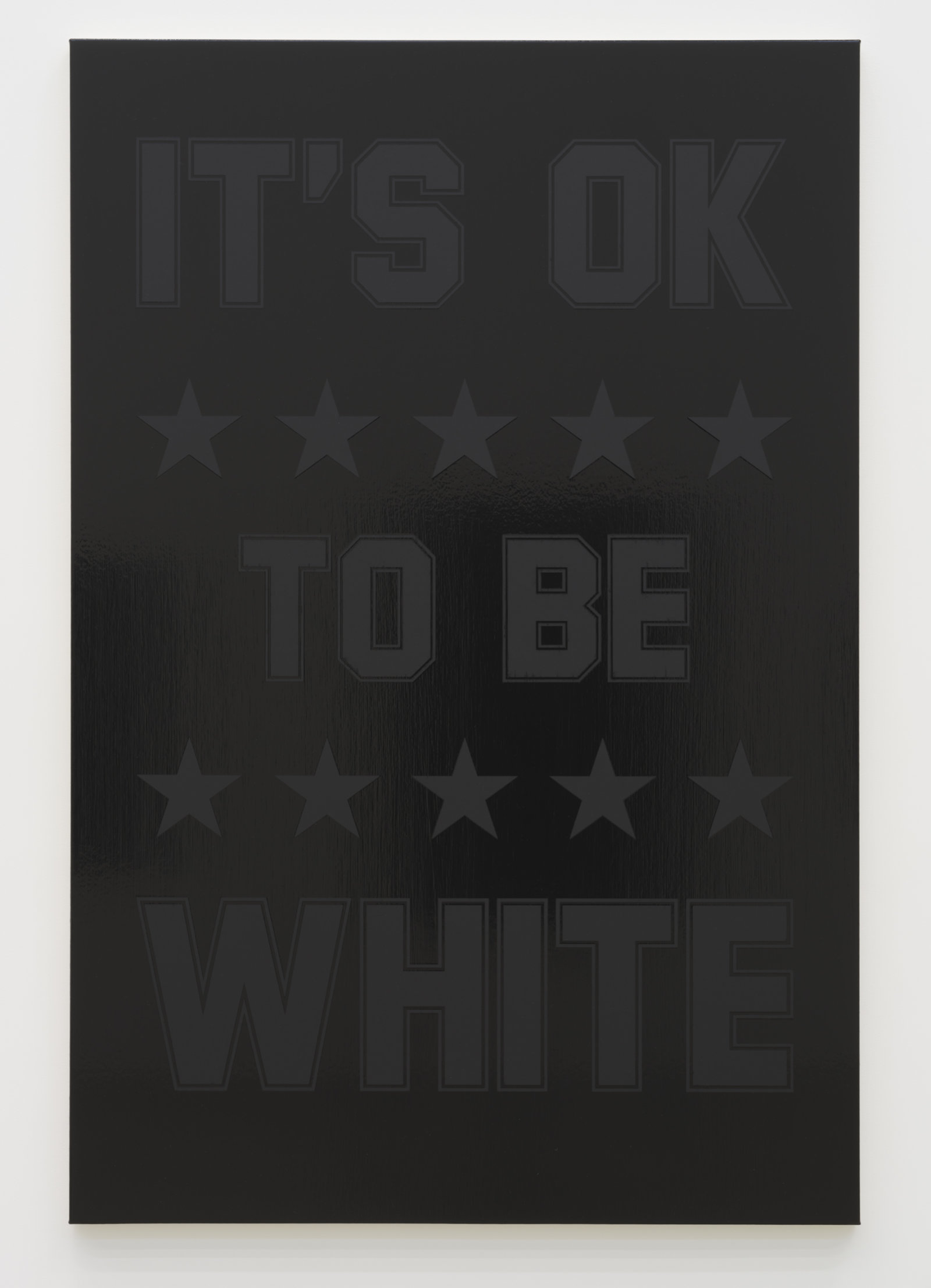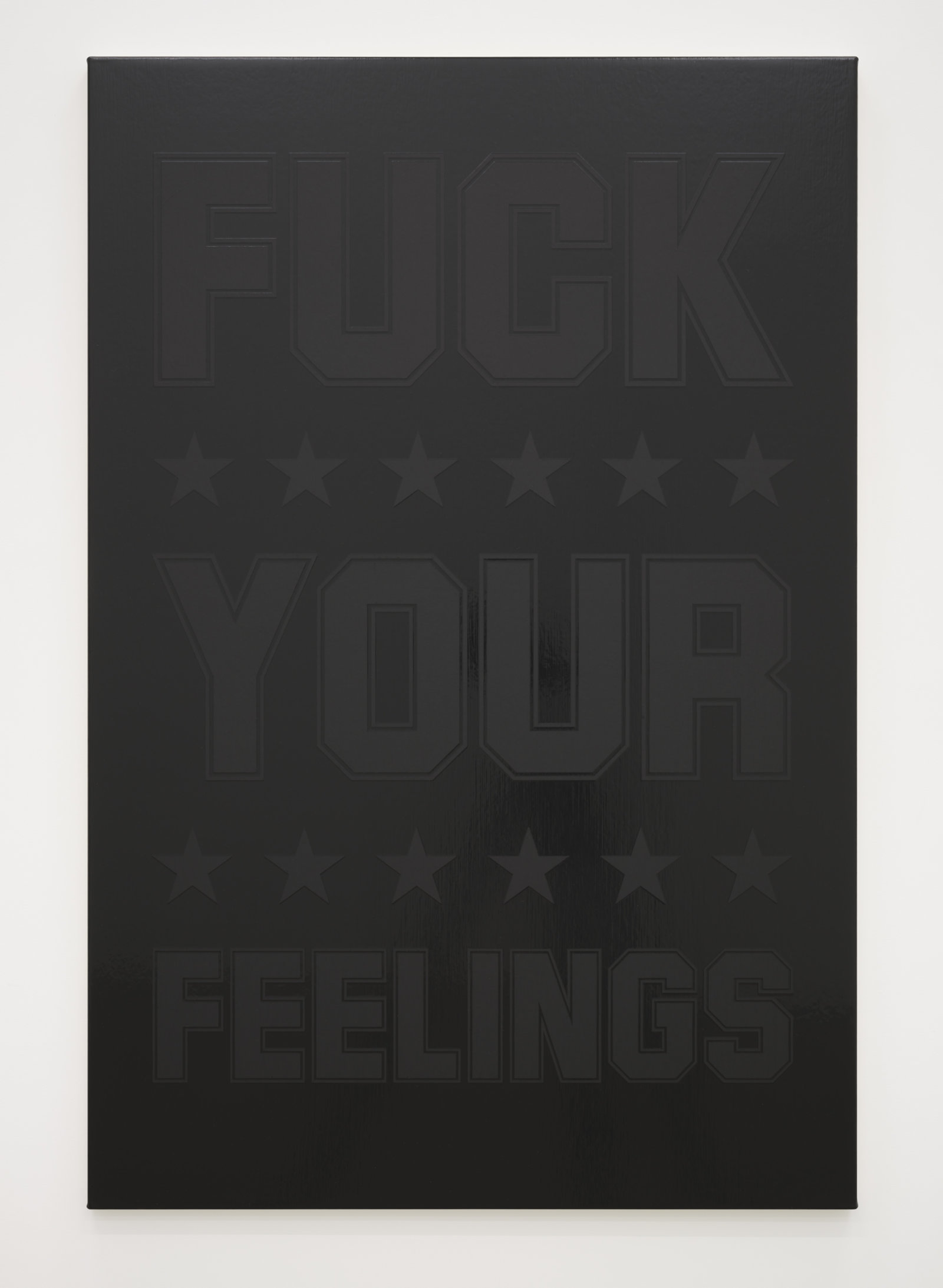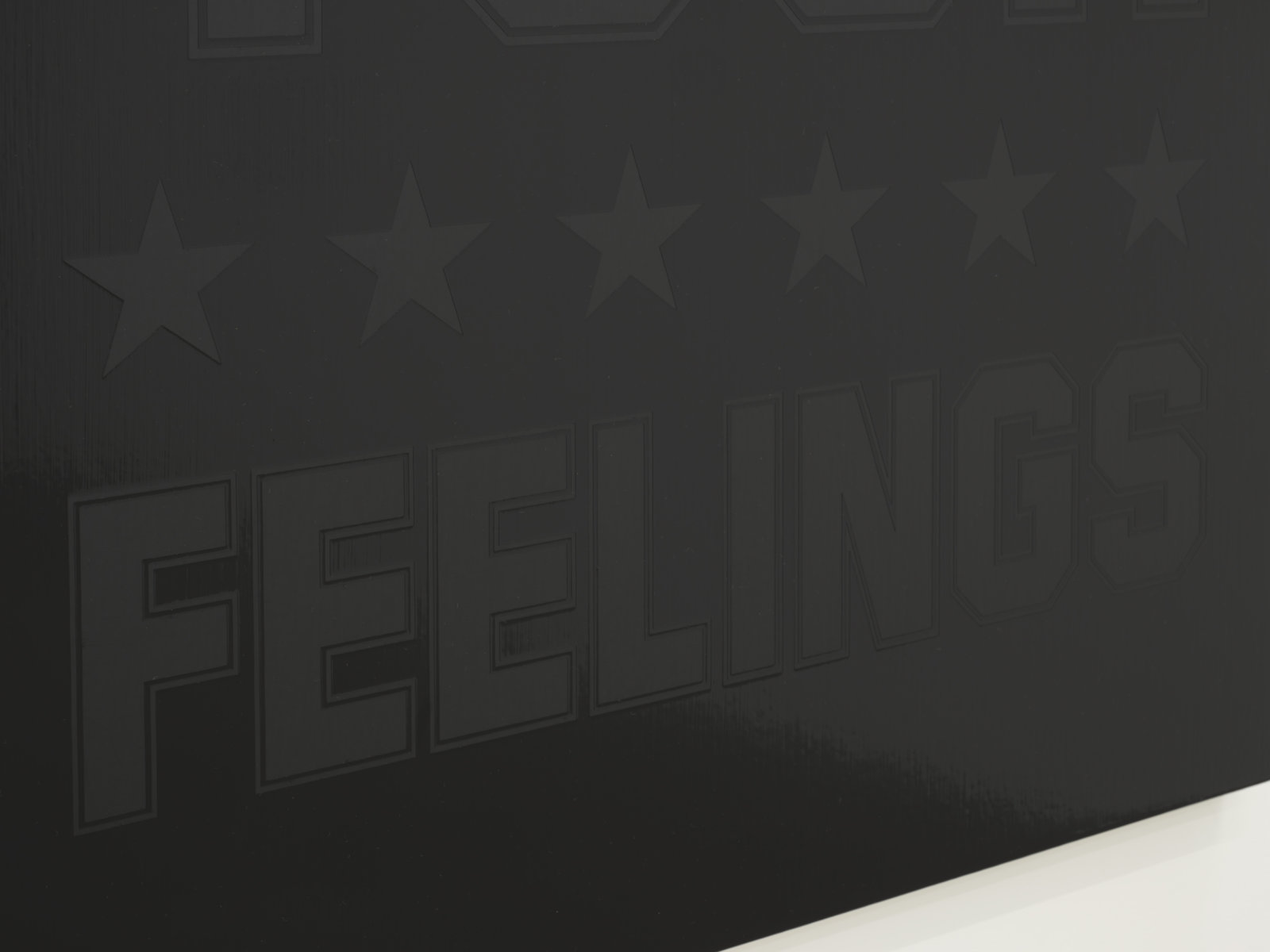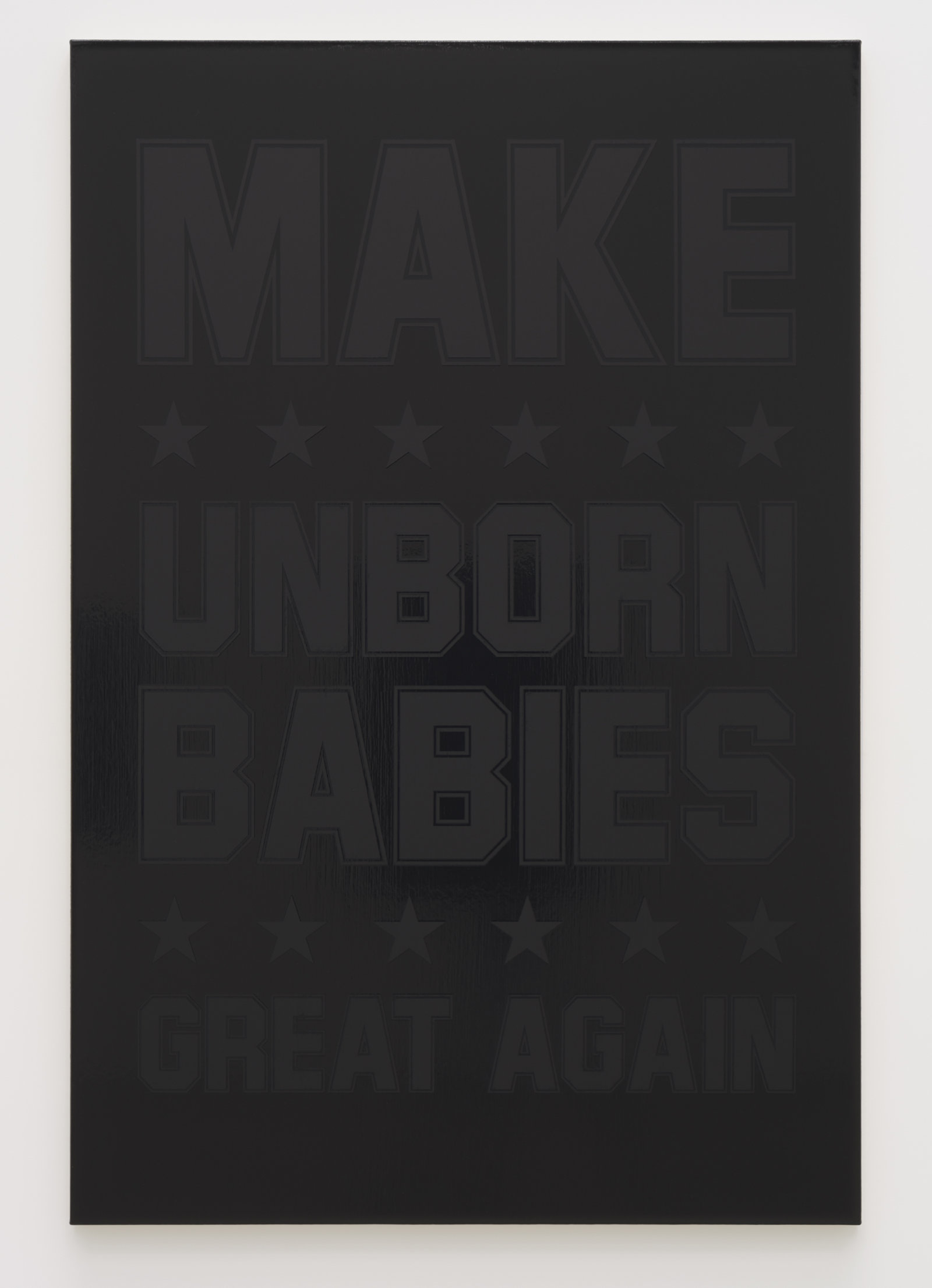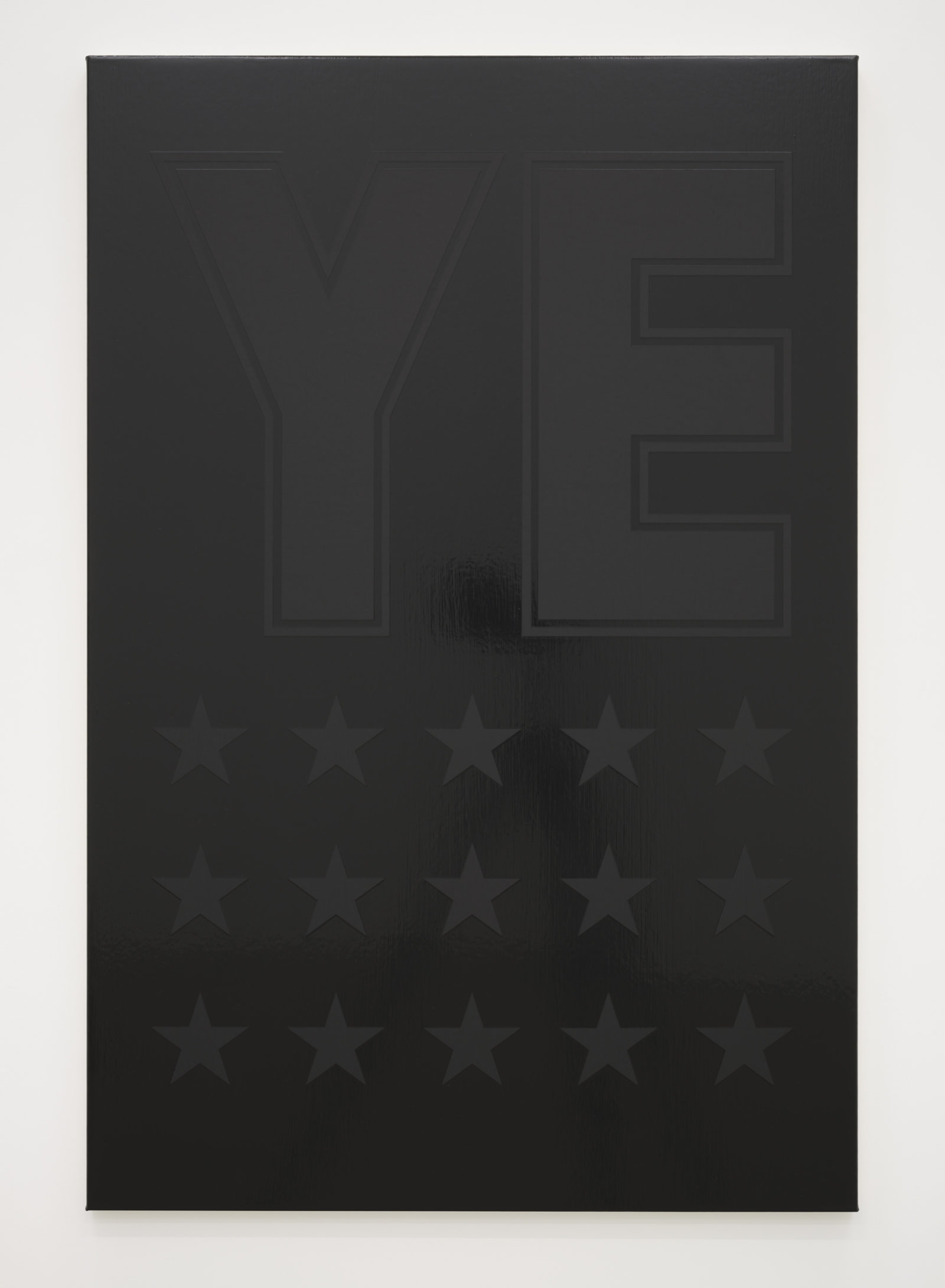Ron Terada – BBQ Beer Freedom SEPTEMBER 28–NOVEMBER 18, 2023
Ron Terada
BBQ Beer Freedom
September 28–November 18, 2023
Catriona Jeffries
Images of the present are categorized by their fluidity and mutability. Captions and contexts are constantly shifting as original sources are lost, and intended audiences are intercepted almost as a matter of course. Images must contend not only with their own indeterminacy, but also with the media platforms used for dissemination, where metrics of engagement are highest when eliciting outrage, division, and fear. Culture wars rage in forums and feeds with occasional flashpoints in the streets, contestations over the developing story of history. What kind of picture could capture this moment when representations are at war with themselves?
Ron Terada’s BBQ Beer Freedom is an exhibition of slick black-on-black paintings depicting appropriated protest slogans. Taken from recent right-wing demonstrations, these slogans are formatted in a blocky collegiate typeface amidst fields of five-pointed stars. Most strikingly, the text is revealed through matte charcoal paint contrasted against a glossy tar black. To read these words, the viewer must move across the canvas’s surfaces, finding angles at which the black-on-black contrast is most legible, all the while contending with their own distorted reflection.
This rendering technique marks a decisive separation from the slogans’ sources, which often appear in meme formats designed for maximal impact. The typeface, Summit Regular, is borrowed from one of the source photographs—collected as offset prints on newsprint at the rear of the gallery. Terada’s use of the font across all the paintings is reminiscent of college sport lettering: the blocky phrases (which repeat loaded words like ‘guns,’ ‘MAGA,’ and ‘woke’) serve to foment team spirit in the spectator sport of the culture war.
By bringing the ammo of sectarian conflict into dialogue with team sports, Terada highlights the in-group/out-group nature of representations in the political arena. All symbols—whether in art, politics, or journalism—necessitate simplification and exclusion in order to effectively represent larger ideas. In this way, the paintings’ numerous star icons not only underscore the jingoistic nature of the depicted rallying cries, they also read as asterisks, marks of censorship that stand-in for all that must be excluded or othered in order to produce in-group coherence. Therefore, a statement like ‘GUNS SAVE LIVES,’ in Terada’s appropriation, becomes riddled with footnotes, each pentagram a redaction: ‘GUNS****** SAVE****** LIVES.’
As the typeface alludes to team sports and jersey lettering, we are also prompted to consider the psychological dimension of this conflict: How does an individual fan (or fanatic) come to identify themselves with the performance of a team or political party? Are they motivated by a desire to win or the desire to make others lose? Under Terada’s brush, slogans become flags, representing policies of ideological nations where distinctions between personal beliefs and civic governance have wholly disintegrated.
Staring at the black-on-black paintings, it will no doubt occur to some viewers to also ask: Can irony exist when divisive information circulates with such speed that only superficial readings are possible? Does a shift in context, such as an art gallery, allow prejudicial or conspiratorial sentiments to open up to different kinds of readings? They are fair questions, ones that change by virtue of the time given to contemplate them. Despite the content remaining unedited from its origins in extremist demonstrations, these images no longer draw power from their circulatory ability, nor their association with fearful masses. Terada’s paintings depict our unfurling history, illustrating the wartorn web of social networks. As context fades and new readings emerge with time, the painting will remain: barbecue, beer, and freedom for all.
